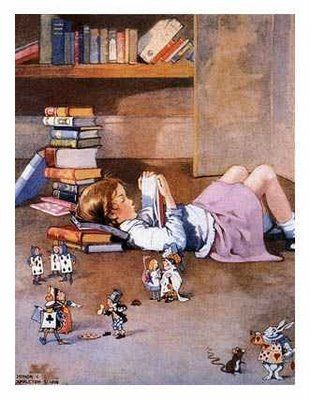Last week, in response to a teacher’s question, I explained the important role summarization plays in reading comprehension. I described how, according to research, we can best teach kids to summarize paragraphs from informational texts.
Voilà, I just walked the talk: I just provided a summary of last week’s blog entry.
This week let’s focus on summarization with longer informational texts and stories. Being able to summarize paragraphs is a useful skill in itself (e.g., identifying the author’s point, paraphrasing, jettisoning the trivial and repetitive) and being able to summarize short portions of text contributes to longer summaries, too.
But there is at least one important difference with longer summaries.
That difference has to do with the role of text structure. While paragraphs may have a structure (for instance, some instructional programs claim that the first sentences of paragraphs are topic sentences), there is really not a consistent pattern to this organization. Paragraphs may or may not have a topic sentence, and when they do, they are as likely to introduce the paragraph as to end it or to be placed somewhere in between. Structure usually plays little, if any, role in summarizing paragraphs. It’s as useless as “diet water.”
But take an essay, chapter, story, or novel and how an author arranges the information becomes a key factor in the summarization game!
Summarizing Stories
When it comes to stories, research shows that plot structure or story grammar is an important factor in memory. Readers come to realize that there are structures that repeat from story to story, which can be used to help remember the story.
These structural elements include setting (time and place), characters, the problem confronting a character, his/her attempts to solve the problem, the consequences of those attempts, as well as the psychological information that captures the characters’ motivations for dealing with the problem and his/her reactions to those outcomes. Usually stories have a point, so theme matters, too.
There are scads of studies showing that story grammar instruction improves kids’ reading comprehension (NICHD, 2000). Teaching kids to anticipate those structural elements when reading and to use those structures to recall the story later really helps.
And those structural elements? They become the skeleton of the story summary.
This tool is useful with longer and more complicated stories, too. Those texts might have the character confronting multiple problems across several episodes (in other words, the structure repeats itself), or they might have multiple characters each facing their own problems (in which case the same structure is instantiated multiple times simultaneously).
Summarizing Informational Texts
Of course, there are structural elements in expository or argumentative texts as well, though this terrain isn’t quite as reliable. Some of the structures that have been identified for these texts include enumeration, comparison, problem/ solution, and cause and effect.
These structures are used by authors, but it is a rare text that only uses one or another of these.
More often authors in the course of explaining or describing a phenomenon will end up using all of these tools at one time or another.
For example, an encyclopedia entry on alligators might enumerate a list of facts about alligators telling about their zoological classification, size, weight, color, life span, habitat, behaviors, diet, reproduction, and anatomy. The overall structure of such a text is an enumeration or list of facts.
However, even within such a list, an author might choose to compare alligators with crocodiles, to explain why they are found in warm climates (cause and effect), or what tropical communities do to protect themselves from alligators (problem/solution).
That nested complexity can make it difficult to use those general text structures as useful summarization tools with longer informational texts.
Accordingly, most schemes for summarizing longer texts have readers using the text’s headings and subheadings as the bones of the summary (e.g., Taylor & Beach, 1984). Readers summarize each paragraph under a particular subheading and then try to compose an overall statement of the key ideas and details included there. In other words, summarizing the collection of summaries.
To keep these statements sufficiently brief, it can help to use schemes like GIST (Cunningham, 1982). The students work through the sections of a text, summarizing each paragraph as described, and come up with a summary statement of no more than 20 words. That might seem a bit artificial, but it really helps students to paraphrase rather than quote.
Additional Considerations
- What I’ve described in these two entries is clunkier and more painstaking than how I usually summarize. But teaching a novice to do something is usually more thoroughgoing than proficient practice. Keep in mind, however, that the goal is to get kids to the point where they can provide a summary quickly, easily, and accurately without filling out story maps, or writing one sentence summaries for each paragraph. Those are tools or way stations; they are not the destination!
- Teach kids to use summarization as a learning strategy. For instance, comprehension and recall improve if you stop and summarize repeatedly along the way (NICHD, 2000). This kind of ongoing summarizing while reading requires the reader to actively engage the text content, encourages continuing clarification, and increases the chances a reader will remember and use key information presented early on by the author.
- Focus on the content of these texts and summaries and not just on the summarization skill. Summarizing should focus on texts the content of which you hope the students will master. Structural summarization leads to more learning than typical question-answering regimes (Armbruster, Anderson, & Ostertag, 1987). Why waste this effort on information that we don’t value? Have kids review their work product from these lessons over time, coming back to these summaries again and again for review so that this knowledge is both acquired and maintained.







Comments
See what others have to say about this topic.